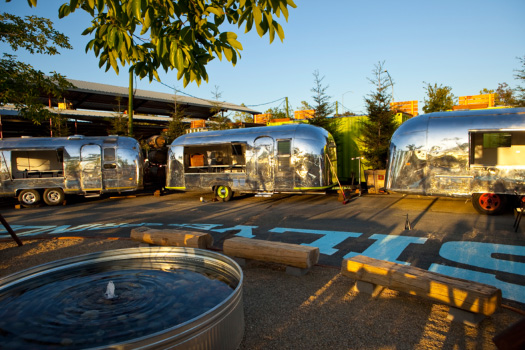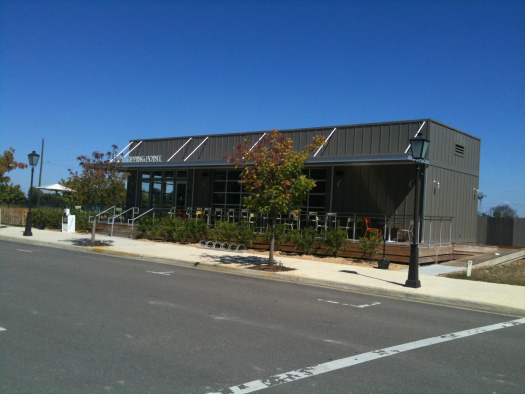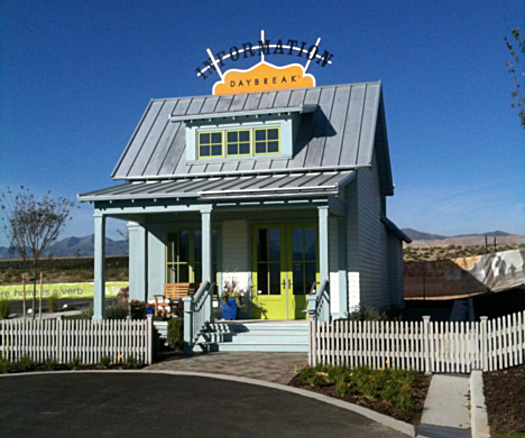A Placemaking Journal
The New Incrementalism

The latest design trend appears to be designing a place to be realized in very gradual stages. Not in terms of planning for phases of development pods, built-out in a predetermined sequence, but about individual lots changing — evolving — over time. Very rarely now are we designing to build immediately for a project’s absolute highest and best use or, as Nathan Norris calls it, its “climax condition.” This new incrementalism focuses on how lots change — how they’re built upon and reconfigured over time before, ahem, reaching their climax.
I see this slow urbanism as having three typologies, based on time, from less permanent to more permanent structures:
1. Blow-up architecture: A movable, removable or deflatable architecture that is the most temporary of any building type. While it may last too many years for its neighbors, the tent, mobile trailer, and inflatable jumpy are easily put up and removed with very little regard for site preparation, such as grading, and utilities beyond an extension cord. Portland, Oregon’s Mississippi Avenue Market Place is a favorite of John Anderson, of Anderson+Kim in Chico, California. Tom Weigle of TownMakers has built a successful business model around his temporary Market Hall project first set up in Hercules, California.

2. A Movable Feast: The pre-fab shipping container, or modular construction type, is built to last but is able to be picked up and moved from place to place as needed. Seaside, Florida, has relied on this increment of urbanism for its 30 years. Once it’s time to build a permanent structure, the modular unit is ‘picked up’ with a forklift, crane or truck, and moved to another site to live another life. The well-known Katrina Cottage is the love child of this construct.
Montgomery, Alabama, has some great examples to learn from these days. The Tipping Point restaurant in the village of Hampstead is a simple yet beloved place. A coffee shop, restaurant, bar and entertainment joint, it will one day be moved to allow for a multi-storied, mixed-use development that simply cannot be financed today. In downtown Montgomery, Development Director Chad Emerson assembled a small, temporary green fronted by modular retail units on the corner of a large, vacant, redevelopment site. This temporary shopping green has been successful enough to attract developer interest.

3. Tear down that bearing wall, Mr. Gorbachev: Architects Steve Mouzon, from Miami, and Ted Smith, of San Diego, have been proponents of ‘Grow’ or ‘Go’ homes for several years. Their initial buildings are modest and configured with the intent of adding to them as their uses, needs and intensities change over time. The idea of building a structure to be torn down and replaced by a comparable one isn’t an economic reality anymore unless land cost is not an issue. And, of course, recycling a building and its material would be the most long-term type of incremental building.
Being a professional throughout the duration of Alan Greenspan’s career, I really didn’t become fully aware of an ‘incremental’ building perspective until 2005 as a member of the Congress for the New Urbanism team that worked on the Mississippi Gulf Coast immediately after Hurricane Katrina. The Katrina Cottages were designed with the intent of re-inhabiting the lot immediately… with the understanding that it might be years before the climax building condition would occur. With today’s economy swirling the air with uncertainty, more and more projects have some sort of incremental element to them, with Katrina Cottages popping up all over the place.

–Howard Blackson
If PlaceShakers is our soapbox, our Facebook page is where we step down, grab a drink and enjoy a little conversation. Looking for a heads-up on the latest community-building news and perspective from around the web? Click through and “Like” us and we’ll keep you in the loop.








